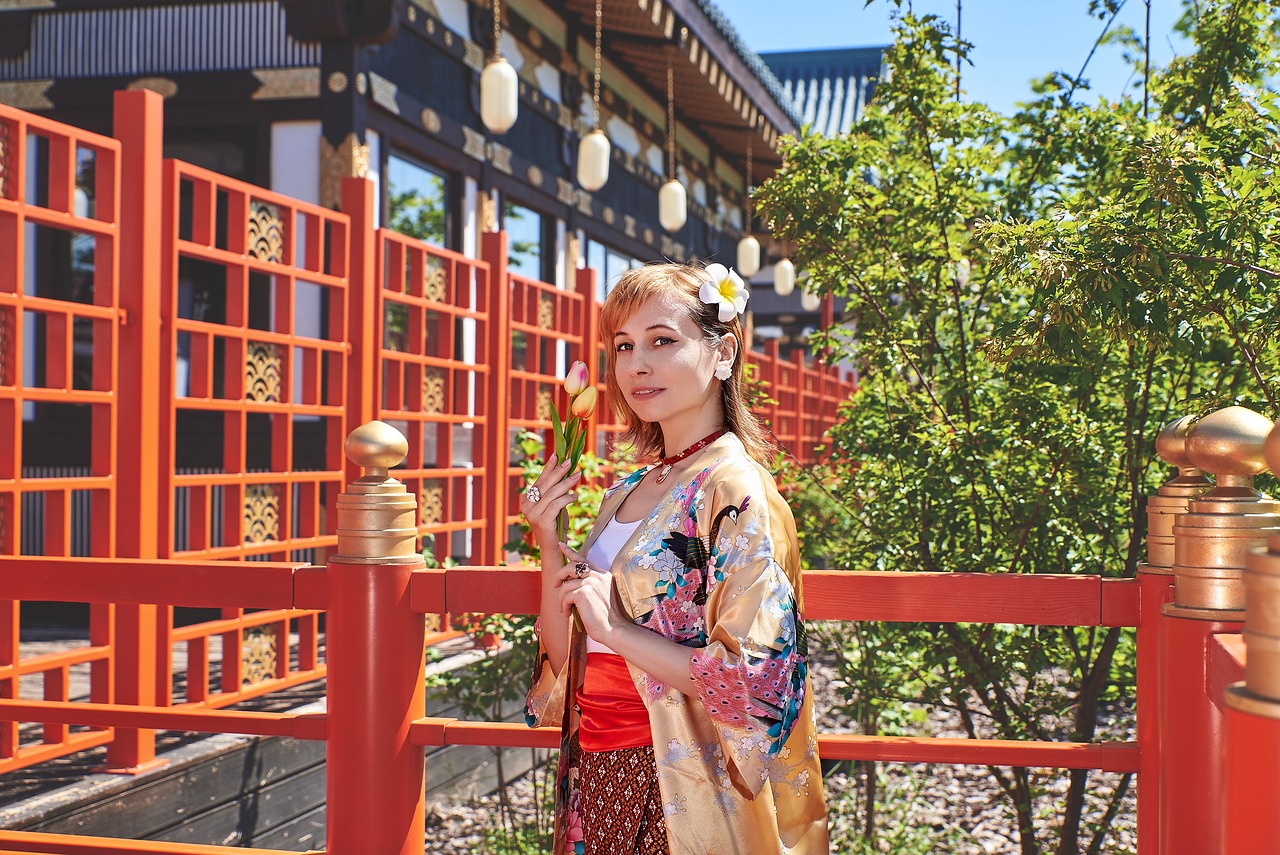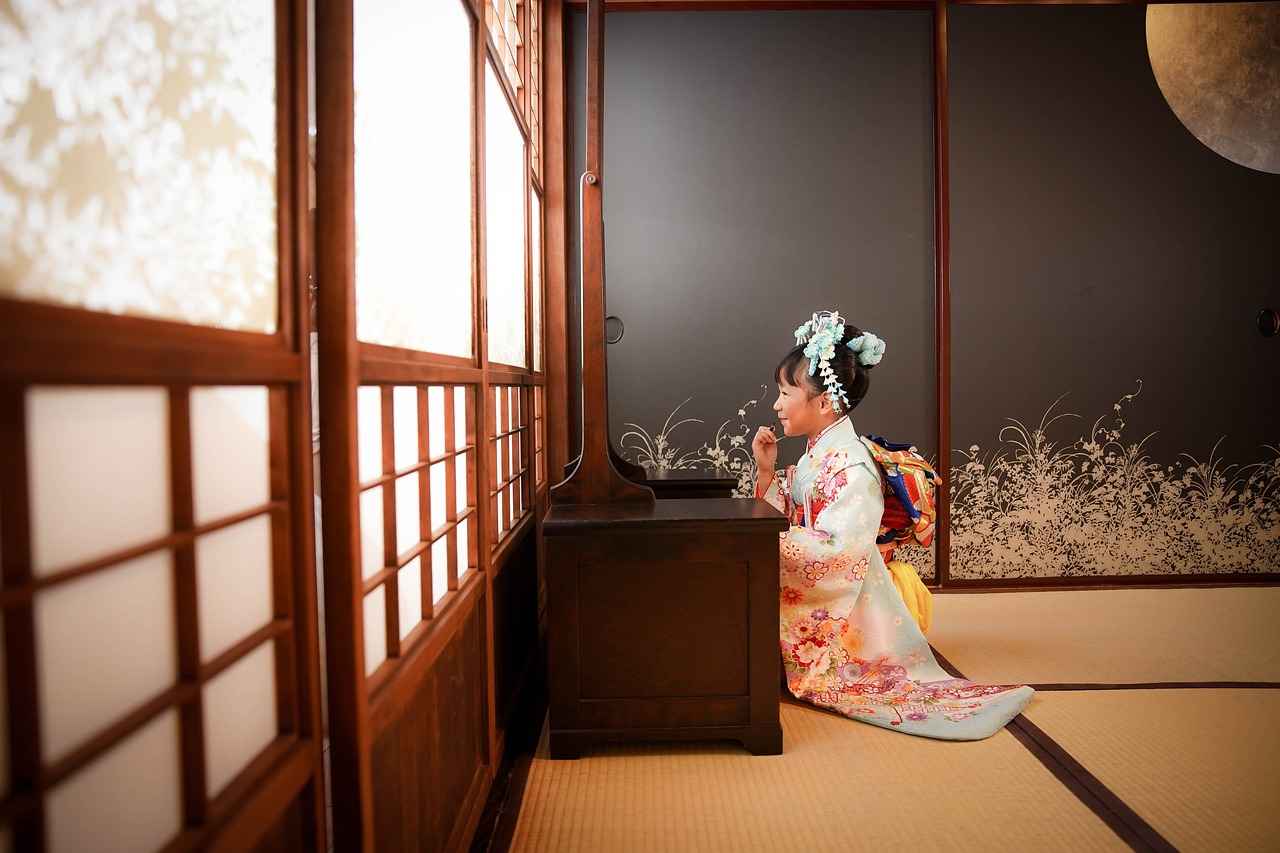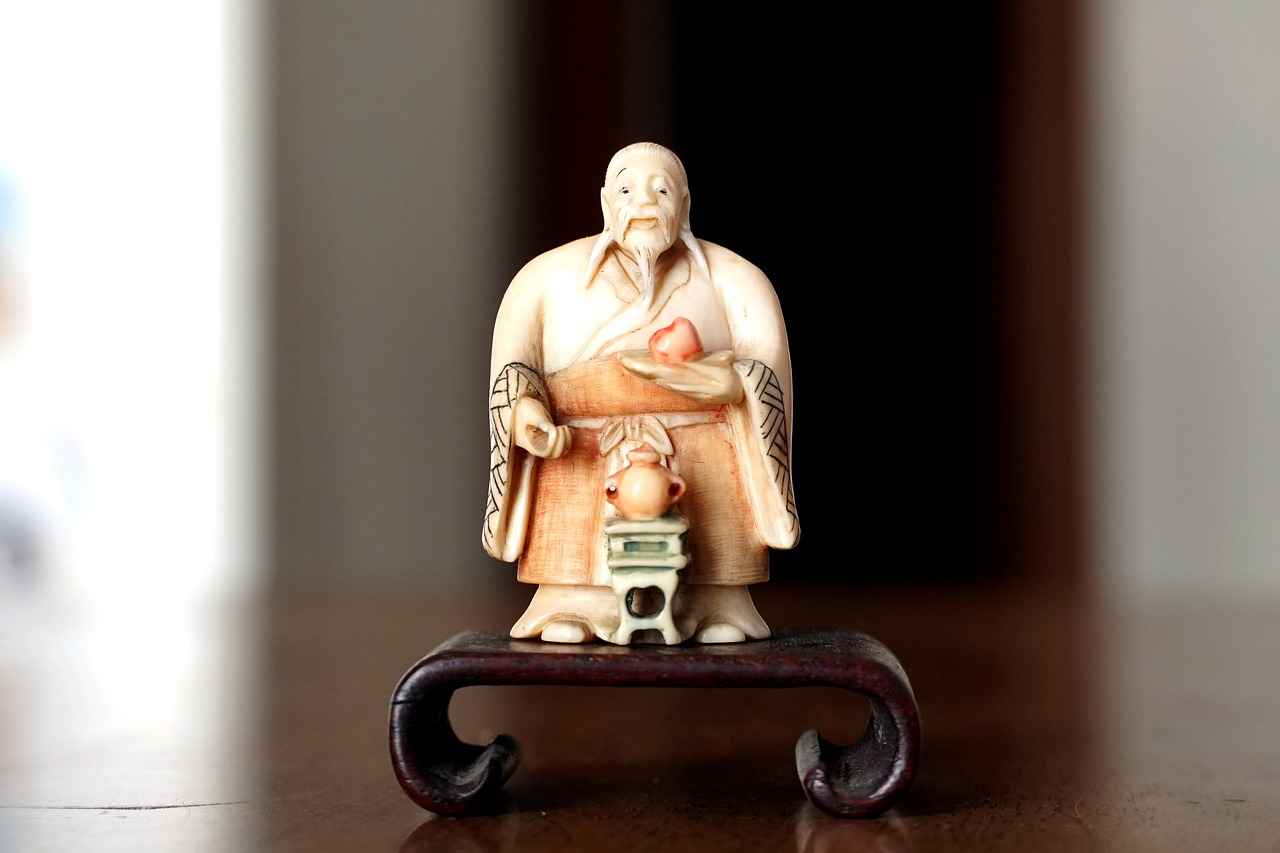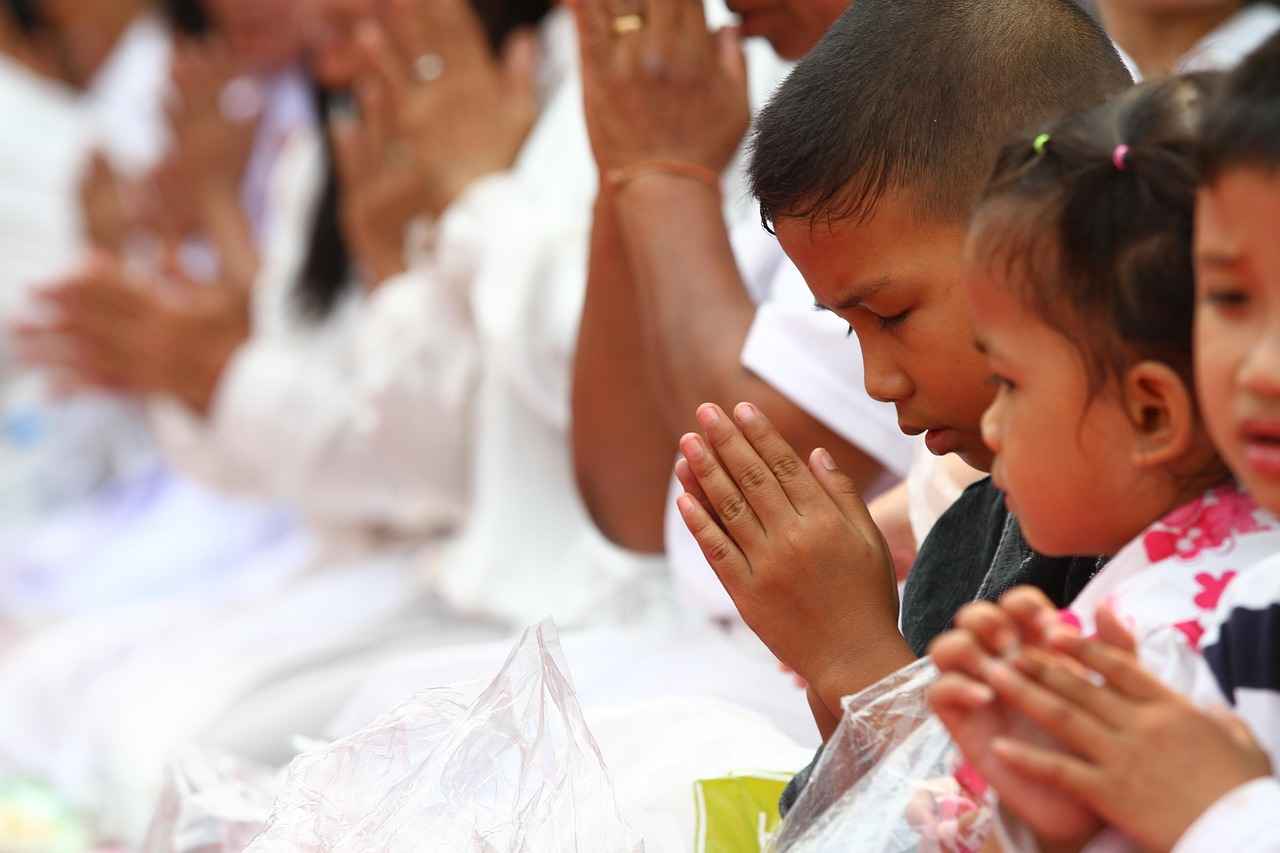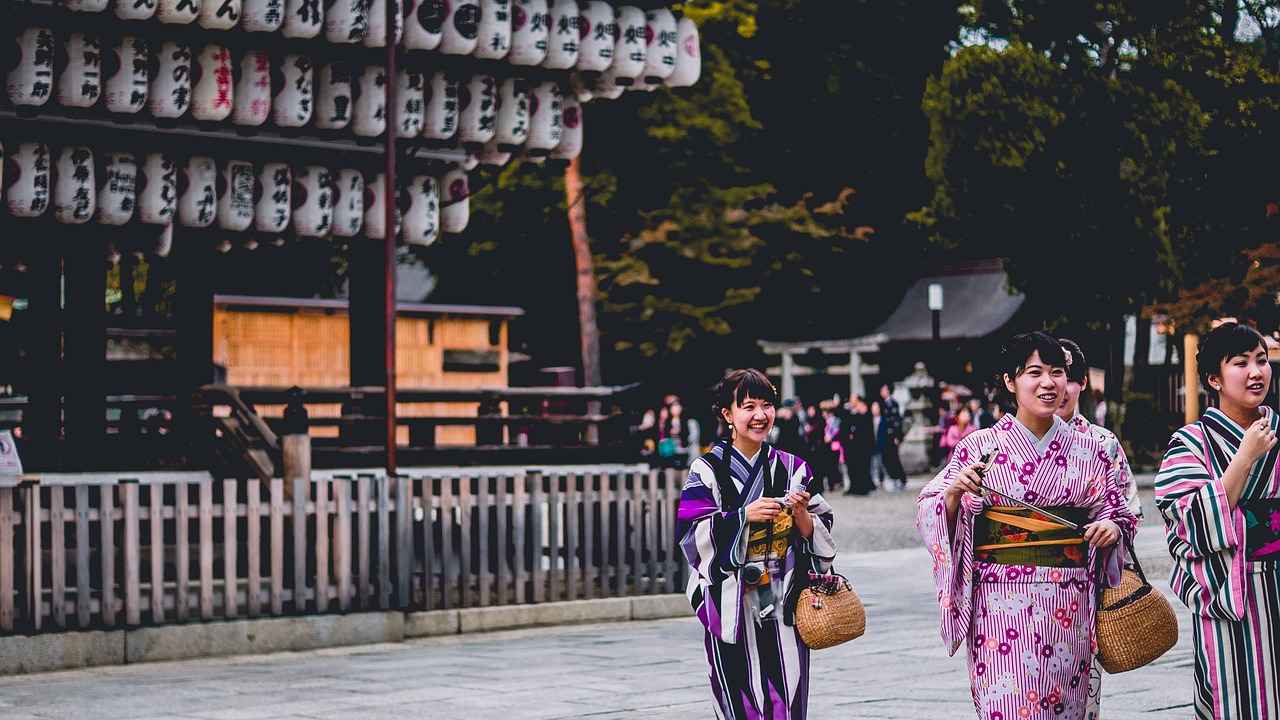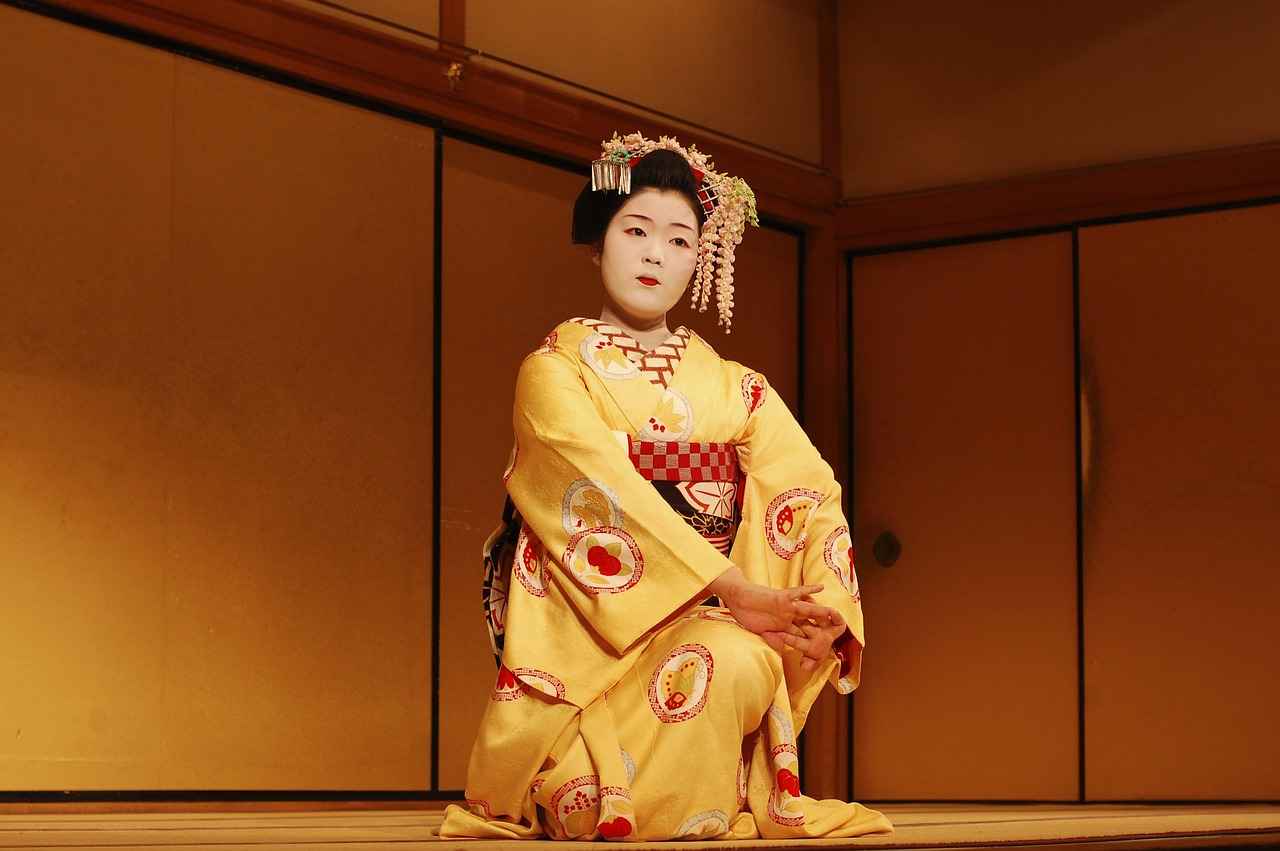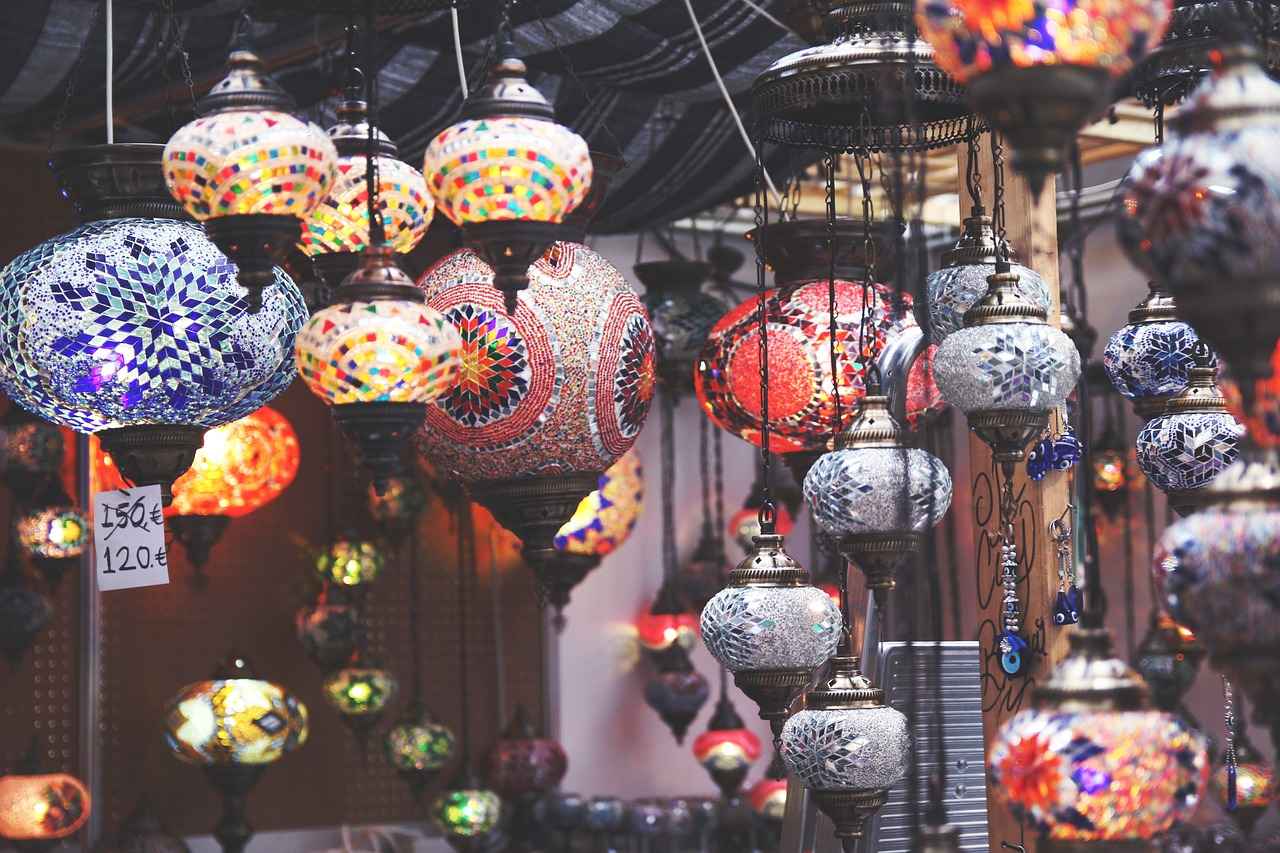This article delves into the rich history, symbolism, and contemporary relevance of the kimono in Japan, exploring its role as a cultural icon and its impact on national identity.
The History of the Kimono
The kimono has a storied past, evolving through various historical periods in Japan. Initially worn by the aristocracy, the kimono transitioned into a garment for all social classes during the Edo period. This evolution reflects Japan’s changing societal structures and values.
Symbolism of the Kimono
Kimonos are imbued with deep symbolism, representing various aspects of Japanese culture, including status, gender, and seasonal changes. These garments often serve as a means of expressing one’s identity and cultural heritage.
- Colors and Patterns: The colors and patterns of kimonos convey specific messages and emotions. For instance, a red kimono may symbolize happiness, while blue can represent calmness.
- Seasonal Variations: Kimonos often feature designs that reflect the seasons, showcasing Japan’s profound appreciation for nature. Spring motifs might include cherry blossoms, while autumn designs may showcase vibrant maple leaves.
- Occasional Significance: Different occasions call for specific kimono styles. Weddings often feature elaborate, brightly colored kimonos, while simpler designs may be worn during funerals.
Gender and Kimono Styles
The styles of kimonos differ significantly between genders. Men’s kimonos are generally more subdued, while women’s kimonos feature vibrant colors and intricate designs, reflecting traditional gender roles in Japanese society.
The Kimono in Modern Japan
While the kimono is often associated with tradition, it continues to evolve in modern Japan. Contemporary designers are reinterpreting this classic garment, blending traditional elements with modern fashion trends.
Fashion Trends and Innovations: New designers are transforming kimonos into chic, everyday wear, making them accessible to a younger audience.
Kimono in Pop Culture: The kimono’s influence extends into pop culture, appearing in anime, films, and fashion shows, thus shaping global perceptions of Japanese culture.
Preservation Efforts
As a cultural heritage item, efforts to preserve the kimono tradition are vital. Educational programs and community events aim to keep this beautiful garment relevant for future generations.
- Educational Programs: Schools and cultural organizations offer courses on the art of kimono wearing, emphasizing its cultural significance.
- Community Events and Festivals: Local festivals celebrate the kimono, providing opportunities for communities to engage with their heritage and foster cultural pride.
The Future of the Kimono
Looking ahead, the future of the kimono is shaped by both tradition and innovation. As Japan continues to modernize, the kimono may evolve while still retaining its cultural essence, bridging the gap between the past and the future.

The History of the Kimono
The kimono is not just a garment; it is a symbol of Japanese culture that reflects the rich history and traditions of Japan. Its evolution over the centuries tells a story of social change, artistry, and cultural significance. Understanding the history of the kimono allows us to appreciate its role in contemporary society.
The origins of the kimono date back to the Heian period (794-1185), where it began as a simple, practical robe. As time progressed, particularly during the Muromachi period (1336-1573), the kimono transformed into a more elaborate garment, characterized by intricate designs and vibrant colors. This period marked the beginning of the artistic expression that kimonos are known for today.
During the Edo period (1603-1868), the kimono became a staple of everyday wear, with distinct styles emerging that indicated social status and gender. The introduction of dyeing techniques and weaving methods allowed for a diverse array of patterns and colors, each carrying its own significance. For instance, certain colors were reserved for the aristocracy, while others were more accessible to the common people.
In the Meiji era (1868-1912), Japan underwent significant modernization, which impacted traditional clothing. The kimono faced competition from Western-style clothing, yet it remained a vital part of Japanese identity. Today, the kimono is often worn during special occasions such as weddings, festivals, and ceremonies, showcasing its enduring relevance in Japanese culture.
As we look to the future, the kimono continues to adapt and find its place in modern fashion, reflecting both tradition and innovation. This rich history not only highlights the garment’s significance but also reinforces its status as a cultural icon in Japan.

Symbolism of the Kimono
The kimono, a traditional garment of Japan, is not merely clothing; it is a profound symbol of cultural identity, rich with meanings that reflect the nuances of Japanese society. Each aspect of the kimono—from its colors to its patterns—carries significance that can reveal the wearer’s status, gender, and even the season in which it is worn.
- Colors and Patterns: The colors of a kimono are often chosen based on the occasion and the message the wearer wishes to convey. For instance, a bright red kimono may symbolize happiness and celebration, while darker colors may denote formality or mourning. Additionally, the patterns can tell stories—floral motifs might indicate a connection to nature, while geometric designs could reflect a more modern aesthetic.
- Seasonal Variations: Kimonos are designed with seasonal themes in mind, showcasing Japan’s deep appreciation for the changing seasons. For example, spring kimonos may feature cherry blossoms, while autumn styles might showcase vibrant maple leaves. This emphasis on seasonal motifs not only highlights the beauty of nature but also connects the wearer to the rhythms of the natural world.
- Occasional Significance: Specific occasions call for particular styles of kimono. For example, during weddings, brides often wear elaborate, richly embroidered kimonos, while festival-goers might choose lighter, more colorful options. Each style is steeped in cultural importance, reflecting the values and traditions associated with significant life events.
- Gender and Kimono Styles: The kimono also reflects traditional gender roles in Japan. Men’s kimonos often feature simpler designs and colors, while women’s kimonos can be more elaborate and colorful. This distinction serves not only as a fashion statement but also as a reflection of the societal expectations placed on different genders.
In conclusion, the symbolism of the kimono is a rich tapestry woven from the threads of history, culture, and personal identity. Understanding these layers of meaning enhances our appreciation for this iconic garment and its enduring significance in Japanese society.
Colors and Patterns
The colors and patterns of kimonos are not merely decorative; they are rich in meaning and significance, deeply embedded in the cultural fabric of Japan. Each design tells a story, conveying messages about the wearer’s social status, personal identity, and even their emotional state. This section explores how various elements of kimono design reflect these important aspects of life in Japanese society.
Traditionally, the color of a kimono can indicate the wearer’s age, marital status, and even the season. For instance, young girls often wear vibrant colors like pink and light blue, symbolizing youth and innocence. In contrast, married women may opt for more subdued tones, such as deep red or black, which signify maturity and sophistication. The meaning behind these colors can change with context; for example, red is often associated with happiness and good fortune, making it a popular choice for festive occasions.
In addition to color, the patterns on kimonos play a crucial role in conveying messages. Floral designs, such as cherry blossoms or chrysanthemums, can symbolize beauty and the transient nature of life, reflecting Japan’s deep appreciation for nature. Geometric patterns, on the other hand, may represent stability and strength, often favored by those in positions of authority. Each motif is chosen with care, as it reflects the wearer’s personality and social standing.
Moreover, the seasonal themes depicted in kimono patterns also hold significance. Kimonos adorned with autumn leaves or winter scenes not only celebrate the beauty of nature but also align with the traditional Japanese belief in living harmoniously with the changing seasons. This connection to nature is a hallmark of Japanese culture, making the kimono a living canvas of the natural world.
In conclusion, the colors and patterns of kimonos serve as a profound means of communication, reflecting the wearer’s identity and societal role. Understanding these elements enriches our appreciation of this beautiful garment and its enduring place in Japanese culture.
Seasonal Variations
Kimonos are not just garments; they are a canvas that reflects the beauty and diversity of Japan’s seasons. Each season brings its unique palette and motifs, deeply rooted in the cultural appreciation of nature. This section delves into how seasonal variations influence the design and style of kimonos, showcasing the intricate relationship between clothing and the natural world.
Throughout the year, kimonos are adorned with patterns that represent the changing seasons. For instance, in spring, you may find kimonos embellished with cherry blossoms (sakura), symbolizing renewal and the fleeting nature of life. Similarly, summer styles often feature bright colors and motifs such as morning glories and lotus flowers, evoking the vibrancy and warmth of the season.
As autumn arrives, kimonos frequently showcase maple leaves and chrysanthemums, colors shifting to rich reds, oranges, and yellows, reflecting the beauty of nature’s transition. In the winter, designs may include snowflakes or pine trees, representing resilience and tranquility during the colder months.
| Season | Common Motifs | Colors |
|---|---|---|
| Spring | Cherry Blossoms | Pink, White |
| Summer | Morning Glories | Blue, Green |
| Autumn | Maple Leaves | Red, Orange, Yellow |
| Winter | Snowflakes | White, Blue |
These seasonal motifs are not only aesthetically pleasing but also carry deep cultural significance. They serve as a reminder of the transience of life and the beauty found in each moment. As such, wearing a kimono with seasonal themes allows individuals to connect with nature and celebrate the changing times.
In conclusion, the seasonal variations of kimonos highlight Japan’s profound respect for nature and its cycles. Each design tells a story, inviting wearers to appreciate the world around them while embracing their cultural heritage.
Occasional Significance
in the world of kimonos is a rich tapestry woven with cultural traditions and personal milestones. Different occasions, such as weddings, festivals, and ceremonies, call for specific kimono styles, each carrying profound meaning and symbolism. Understanding these garments within the context of important life events enhances our appreciation for their cultural relevance.
For instance, during weddings, the bride typically wears a shiro-muku, a pure white kimono that symbolizes purity and new beginnings. The use of white is not only traditional but also represents the bride’s readiness to embrace her new life. Meanwhile, the groom often dons a montsuki, a formal kimono adorned with family crests, indicating his status and lineage.
Festivals, known as matsuri, also showcase a variety of kimono styles. Participants often wear brightly colored yukata, a casual summer kimono made of cotton, which is perfect for the warm weather and festive atmosphere. These garments are often adorned with seasonal motifs, reflecting the beauty of nature and the joy of celebration. For example, floral patterns are popular during spring festivals, while vibrant hues are favored during summer events.
In addition to weddings and festivals, kimonos play a significant role in ceremonial events such as Shichi-Go-San, a rite of passage for children aged three, five, and seven. During this event, girls often wear colorful furisode, a long-sleeved kimono symbolizing youth and beauty, while boys may wear a hakama, showcasing their transition into adulthood.
Overall, the occasional significance of kimonos is not just about fashion; it is a representation of identity, heritage, and the deep-rooted traditions of Japanese culture. As we celebrate these life events, we also honor the stories and meanings behind each kimono style.
Gender and Kimono Styles
The styles of kimonos differ significantly between genders, highlighting the cultural and historical context of traditional Japanese society. These differences are not merely aesthetic; they embody the traditional gender roles that have shaped Japanese culture for centuries.
Traditionally, men’s kimonos tend to be more simple and functional, often characterized by darker colors and minimalistic patterns. The most common style for men is the kimono hakama, which is a combination of a kimono and wide trousers. This style reflects a sense of formality and practicality, aligning with societal expectations of masculinity.
On the other hand, women’s kimonos are typically more ornate and colorful, featuring intricate designs and a variety of styles that vary based on age, occasion, and season. For instance, young girls may wear furisode, which are long-sleeved kimonos adorned with vibrant patterns, symbolizing youth and femininity. In contrast, married women often wear tomesode, which are more subdued and elegant, reflecting their marital status.
This distinction between male and female kimono styles not only reflects individual identity but also reinforces societal norms. The elaborate nature of women’s kimonos has historically been associated with their roles as caretakers and homemakers, while the simplicity of men’s attire aligns with their roles as providers and protectors.
Furthermore, the evolution of these styles continues to mirror changes in gender roles within modern Japanese society. As traditional gender expectations shift, we see a gradual blending of styles, with both men and women exploring new ways to express their identities through kimono fashion.
In conclusion, the differences in kimono styles between genders provide a fascinating insight into traditional Japanese culture and its evolving nature. Understanding these variations allows us to appreciate not only the garments themselves but also the broader societal values they represent.

The Kimono in Modern Japan
While the kimono is often associated with tradition, it continues to evolve in modern Japan, adapting to contemporary tastes and lifestyles. This evolution reflects a dynamic interplay between heritage and modernity, showcasing how this iconic garment remains relevant in today’s society.
In recent years, fashion designers have embraced the kimono, reinterpreting its classic forms with innovative materials and styles. This has led to a resurgence in popularity, particularly among younger generations who seek to blend traditional aesthetics with modern fashion statements. The use of vibrant colors and unconventional patterns has made kimonos a staple in both casual and formal settings.
Moreover, the kimono has found its place in the realm of pop culture. It appears frequently in anime, films, and fashion shows, serving as a symbol of Japanese culture that resonates globally. This representation not only enhances the kimono’s allure but also educates international audiences about its significance in Japanese heritage.
| Aspect | Modern Adaptation |
|---|---|
| Fashion Trends | Incorporation of contemporary fabrics and styles |
| Pop Culture | Featured in anime and global fashion events |
| Everyday Wear | Casual kimonos for daily use |
The kimono is also being embraced as everyday wear, with many opting for lighter and more comfortable versions that can be worn casually. This shift is indicative of a broader trend where traditional garments are integrated into daily fashion, allowing individuals to express their cultural identity while enjoying modern convenience.
In conclusion, the kimono’s journey through modern Japan exemplifies a remarkable balance between preserving cultural heritage and embracing innovation. As it continues to adapt, the kimono not only retains its traditional significance but also evolves into a versatile garment that resonates with the contemporary lifestyle.
Fashion Trends and Innovations
The kimono, a traditional Japanese garment, is experiencing a remarkable transformation in the realm of modern fashion. As new designers emerge, they are reinterpreting the kimono with innovative designs and contemporary styles that resonate with today’s fashion sensibilities. This evolution not only honors the rich heritage of the kimono but also makes it accessible and appealing to a broader audience.
Designers are drawing inspiration from the traditional elements of the kimono, such as its unique fabric choices, intricate patterns, and elegant silhouettes. However, they are infusing these elements with a modern twist, often incorporating bold colors and asymmetrical cuts that appeal to younger generations. This fusion creates a dialogue between the past and present, allowing the kimono to maintain its cultural significance while evolving into a fashionable statement piece.
Moreover, the rise of sustainable fashion has prompted designers to explore eco-friendly materials and practices in kimono production. Many are using recycled fabrics and traditional dyeing techniques, which not only preserve the art of kimono-making but also cater to the growing demand for environmentally conscious clothing. This aspect of innovation highlights a commitment to both tradition and sustainability, making the kimono relevant in today’s fashion landscape.
In addition to aesthetics, the functionality of the kimono is being rethought. Designers are creating versatile pieces that can be worn for various occasions, from casual outings to formal events. This adaptability is crucial in a fast-paced world where consumers seek clothing that fits multiple roles in their lives.
As the kimono continues to be embraced by the fashion industry, it stands as a testament to the enduring power of cultural heritage. The innovative approaches taken by new designers ensure that the kimono not only survives but thrives, captivating the hearts of fashion enthusiasts around the globe.
Kimono in Pop Culture
The kimono, a traditional Japanese garment, has transcended its cultural roots to become a significant element in pop culture worldwide. This section delves into the various ways the kimono is represented in modern media, particularly in anime and fashion shows, and examines its influence on global perceptions of Japanese culture.
In the realm of anime, the kimono often symbolizes grace, tradition, and cultural heritage. Characters donning kimonos are frequently portrayed as embodying the essence of Japan, showcasing the garment’s ability to convey deep cultural narratives. Popular series such as Inuyasha and Spirited Away feature characters in kimonos, reinforcing the garment’s association with Japanese folklore and history. The visual impact of these characters helps to educate international audiences about traditional Japanese attire, fostering a greater appreciation for its beauty and significance.
Moreover, the kimono’s presence in fashion shows has further solidified its status as a cultural icon. Renowned designers like Yohji Yamamoto and Issey Miyake have incorporated kimono elements into their collections, blending traditional aesthetics with modern fashion sensibilities. This fusion not only revitalizes the kimono but also introduces it to new audiences, who may not have encountered it in its traditional context. Fashion weeks around the world have seen kimonos transformed into high-fashion statements, reflecting a growing trend of cultural appreciation and innovation.
Additionally, the global fascination with the kimono has sparked discussions about cultural appropriation and respect for tradition. As the garment becomes a staple in international fashion, it raises questions about the responsibilities of designers and consumers in honoring its origins. The dialogue surrounding the kimono in pop culture ultimately contributes to a broader understanding of Japanese identity and heritage.
In conclusion, the kimono’s representation in anime and fashion underscores its enduring cultural significance. As it continues to captivate audiences worldwide, the kimono serves as a bridge between traditional Japanese culture and contemporary global trends, enriching the cultural tapestry of our interconnected world.
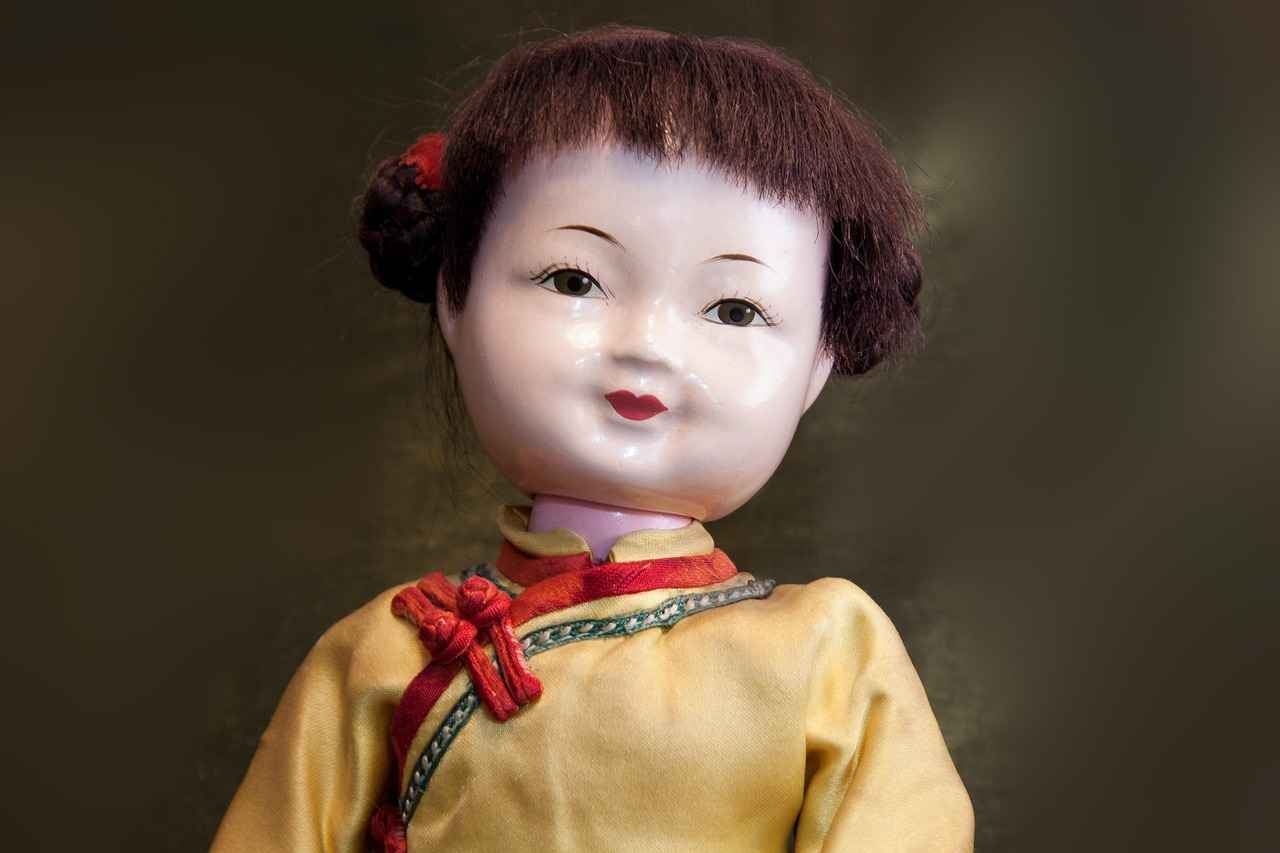
Preservation Efforts
The kimono is not just a garment; it is a profound symbol of Japanese culture and heritage. As such, the efforts to preserve the kimono tradition are vital. In recent years, various initiatives have been launched to ensure that this iconic attire remains relevant for future generations. This section discusses these initiatives in detail.
- Educational Programs: Schools and cultural organizations are stepping up to teach the art of kimono wearing. Programs are designed to educate the younger generation about the history, significance, and techniques of wearing kimonos. By incorporating kimono education into curricula, students gain a deeper appreciation for their cultural heritage.
- Community Events and Festivals: Local festivals play a crucial role in celebrating the kimono. Events such as the Kimono Walk allow participants to wear kimonos and engage in traditional activities. These gatherings not only foster cultural pride but also create a sense of community, encouraging people to embrace and pass on their heritage.
- Collaboration with Designers: Contemporary designers are collaborating with traditional artisans to create innovative kimono designs. This fusion of modern fashion with traditional techniques keeps the kimono relevant in today’s fashion world. By appealing to younger audiences, these collaborations ensure that the kimono continues to evolve while retaining its cultural essence.
- Online Resources and Tutorials: The digital age has opened up new avenues for kimono preservation. Numerous online platforms offer tutorials on how to wear and care for kimonos. These resources make it accessible for anyone interested in learning about this beautiful garment, thus broadening its appreciation.
In conclusion, the preservation of the kimono tradition is a multifaceted effort that involves education, community engagement, and innovation. By embracing these initiatives, we can ensure that the kimono not only survives but thrives, continuing to be a vibrant part of Japan’s cultural landscape for generations to come.
Educational Programs
In recent years, schools and cultural organizations across Japan have recognized the importance of teaching the art of kimono wearing, not just as a fashion statement but as a vital part of cultural heritage. These educational programs aim to instill a sense of pride and understanding of the kimono’s significance among younger generations.
- Workshops and Classes: Many institutions now offer workshops where participants can learn the intricacies of kimono dressing, including the proper techniques for tying the obi (belt) and selecting appropriate accessories.
- Historical Context: Classes often include lessons on the history and evolution of the kimono, helping students appreciate its cultural context and significance.
- Community Engagement: Programs encourage community involvement, allowing participants to share their experiences and learn from one another, thereby fostering a deeper connection to their cultural roots.
These educational initiatives play a crucial role in cultural preservation. By teaching the younger generation about the kimono, these programs ensure that traditional practices are not lost to modernity. Students gain hands-on experience, which promotes a tangible connection to their heritage.
Moreover, many of these programs are designed to be inclusive, welcoming people of all ages and backgrounds. This inclusivity not only broadens participation but also enriches the learning experience by bringing together diverse perspectives on the kimono’s role in society.
Through these efforts, schools and cultural organizations are not just teaching a skill; they are nurturing a sense of identity and belonging. The kimono, as a symbol of Japan’s rich history, continues to thrive through education, ensuring that future generations can appreciate and celebrate this beautiful tradition.
Community Events and Festivals
play a crucial role in celebrating the kimono, allowing local communities to reconnect with their cultural roots. These vibrant gatherings not only showcase the beauty of the kimono but also serve as a platform for fostering cultural pride and ensuring the continuity of traditions.
Throughout Japan, various festivals are dedicated to the kimono, each with its unique flair and significance. These events often feature parades, workshops, and exhibitions that invite participants to immerse themselves in the art of kimono wearing and appreciation. For instance, the annual Kimono Festival in Kyoto is renowned for its stunning displays of traditional attire, where both locals and tourists don exquisite kimonos to celebrate.
- Engagement with Heritage: Festivals encourage participants to engage with their heritage, providing a sense of belonging and identity. Attendees often share stories and experiences related to their family’s kimono history, strengthening community bonds.
- Educational Opportunities: Many events include educational components, such as workshops on kimono dressing techniques and the history behind various styles. These activities not only promote skill development but also deepen understanding of cultural significance.
- Intergenerational Connections: Festivals often attract different generations, allowing younger attendees to learn from their elders. This exchange of knowledge helps preserve traditional practices and fosters a sense of continuity.
Moreover, the visual spectacle of these festivals, adorned with colorful kimonos and lively performances, captivates audiences and attracts media attention, further promoting the kimono as a symbol of Japanese culture. In this way, local festivals do not merely celebrate a garment; they reinforce a cultural identity that is cherished and passed down through generations.
In conclusion, community events and festivals dedicated to the kimono play an essential role in nurturing cultural pride and continuity. By participating in these celebrations, individuals contribute to the preservation of a rich heritage, ensuring that the legacy of the kimono continues to thrive in modern society.
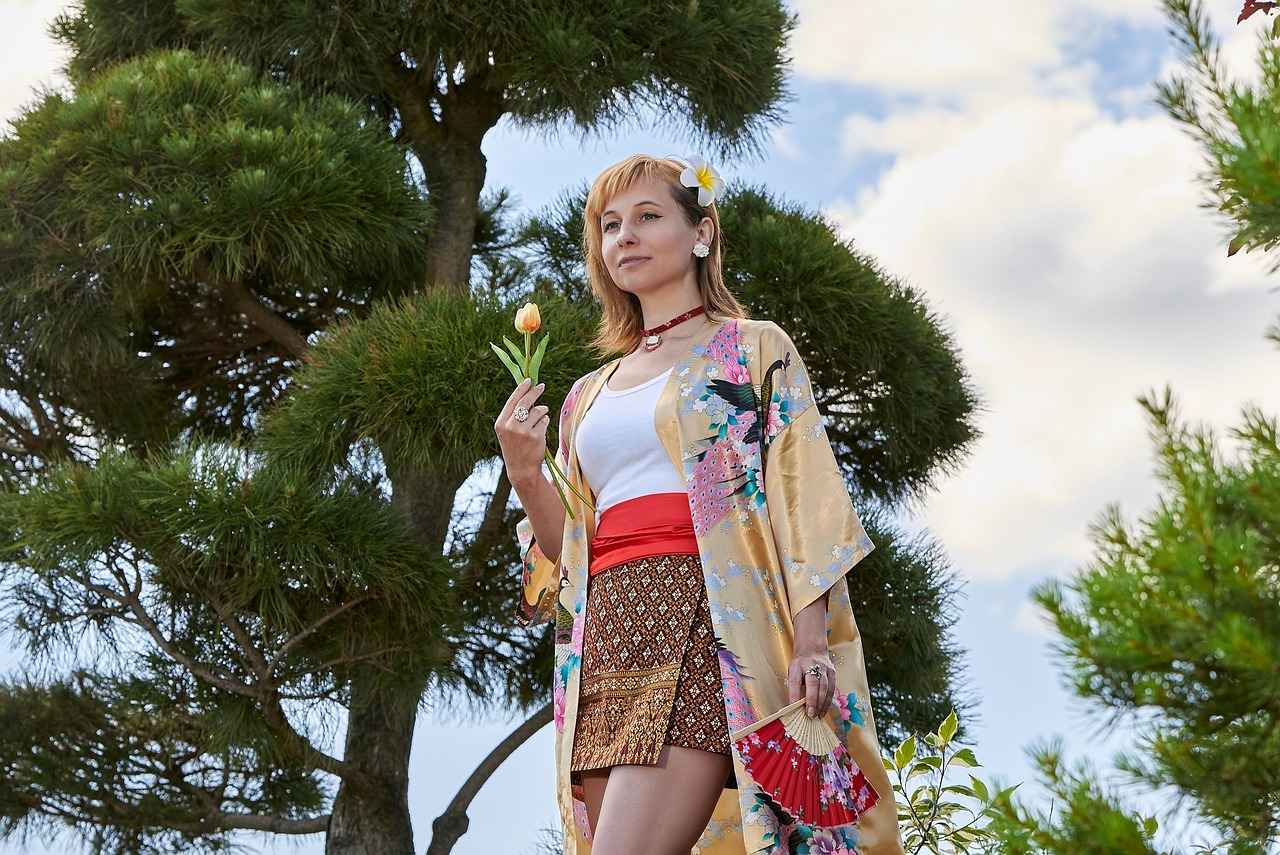
The Future of the Kimono
As we look toward the future, the kimono stands at a fascinating crossroads, influenced by both its rich traditions and the winds of innovation. The evolution of this iconic garment reflects a broader narrative of cultural adaptation in a rapidly globalizing world.
One of the most significant trends shaping the future of the kimono is its integration into modern fashion. Designers are increasingly experimenting with traditional fabrics and patterns, creating contemporary pieces that resonate with younger generations. This fusion not only preserves the essence of the kimono but also makes it more accessible and appealing to a global audience.
Furthermore, the global appreciation for the kimono has surged, particularly in Western countries where elements of Japanese culture are celebrated. This international interest promotes a dialogue about cultural exchange and understanding, encouraging a reimagining of the kimono as a versatile garment suitable for various occasions.
In addition, advancements in technology are playing a crucial role in the kimono’s future. Digital fashion and virtual reality applications allow designers to showcase their work in innovative ways, reaching audiences far beyond traditional markets. This technology-driven approach also opens avenues for sustainable practices, as designers can explore eco-friendly materials and production methods.
However, the future of the kimono is not without challenges. The risk of cultural appropriation looms large, as the garment’s significance could be diluted if not handled with care. It is essential for both creators and consumers to engage with the kimono’s cultural heritage respectfully, ensuring that its traditional roots are honored even as it evolves.
In conclusion, the kimono’s future is a delicate balance of tradition and innovation. As it adapts to contemporary tastes and global influences, the kimono can continue to thrive as a symbol of Japanese culture while fostering appreciation and understanding worldwide.
Frequently Asked Questions
- What is the historical significance of the kimono?
The kimono has a rich history that dates back centuries, evolving through various periods in Japan. It serves as a cultural icon, reflecting Japan’s social changes and artistic expressions throughout time.
- How do colors and patterns in kimonos convey meaning?
Colors and patterns in kimonos are not just for aesthetics; they carry deep symbolism. For instance, specific colors can represent different seasons or social statuses, making each kimono a unique expression of identity.
- Are kimonos still worn today?
Absolutely! While kimonos are often associated with tradition, they continue to be worn in modern Japan during special occasions like weddings and festivals, showcasing their enduring relevance.
- What role does the kimono play in Japanese pop culture?
The kimono has made significant appearances in anime, fashion shows, and various media, influencing global perceptions of Japanese culture and style. It’s a blend of tradition and contemporary creativity!
- How are preservation efforts being made for the kimono tradition?
Efforts include educational programs that teach the art of wearing kimonos and community events that celebrate this cultural heritage, ensuring that future generations appreciate and continue this beautiful tradition.
